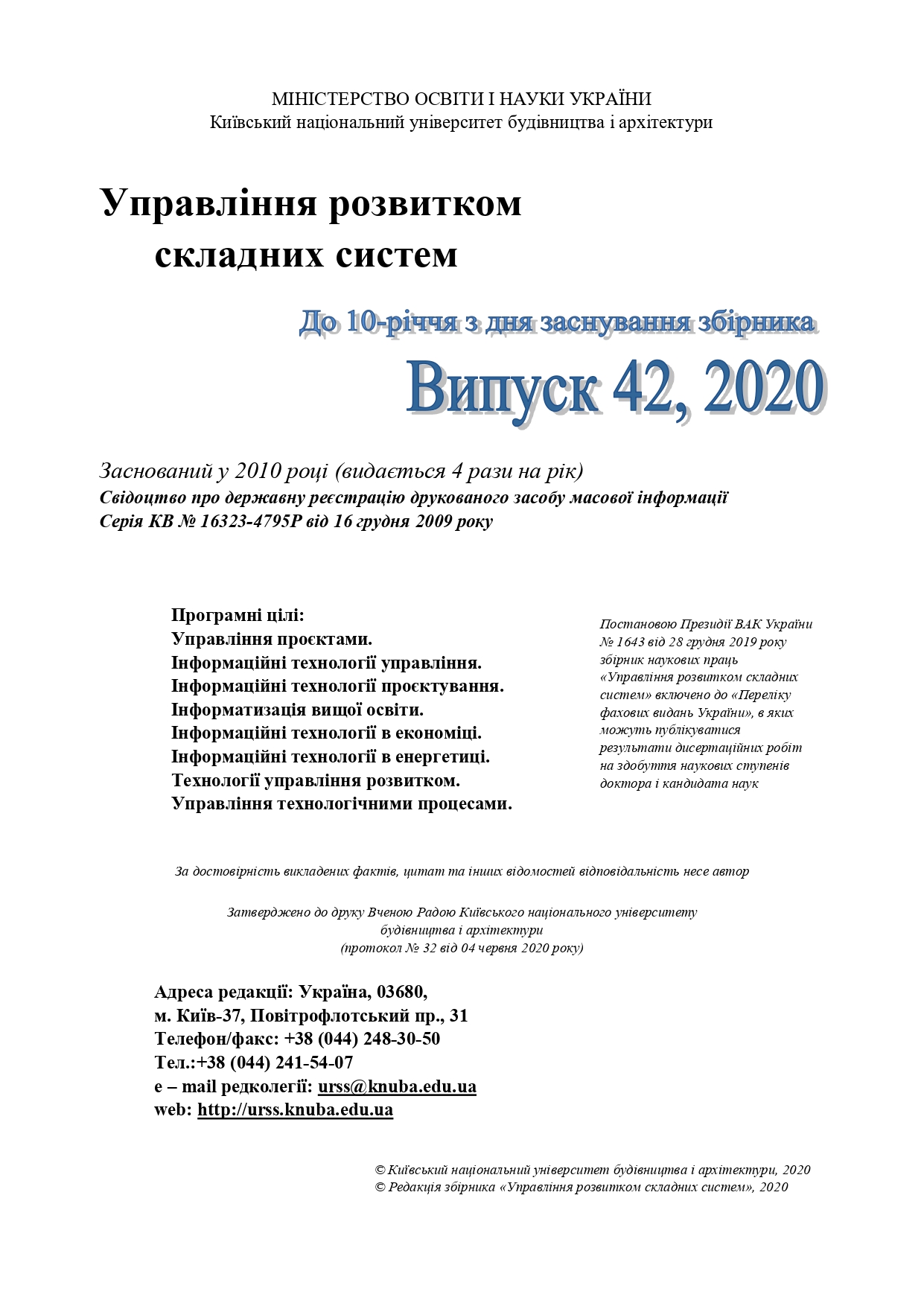VR-TECHNOLOGY AS A MODERN ARCHITECTURE TOOL
DOI:
https://doi.org/10.32347/2412-9933.2020.42.69-74Ключові слова:
CAD, VR-technology, virtual reality, design, architectureАнотація
Visualization tools like CAD help architects to develop their projects, but they’re not always successful in doing that. For one, the tools are too complex and the digital drawings and models produced are still 2D screen bounded, which makes it difficult – for collaborators and clients as well as the architects – to get a real, accurate sense of how design will look like, function, and take up space in the reality. According to the current way how CAD works for both visualization and prototyping – it has tremendous limitations. Every architect using CAD face problem of limitations resulting in misunderstanding between person who look at the visualization and own architects spatial view. 3D simulation on the 2D screen causes difficulties in experiencing scale, contextual elements and depth. However it is not proved that CAD representation results in wrong perception, since each individual human spatial perception has ability to intuitively compensate scale and depth issues individually that may differ from architects one. Thus, VR has the possibility to avoid pitfalls and provide natural and perception-friendly visualization. The epoch of CAD is ending – Virtual reality (VR) will be next digital visualization standard [1; 2]. This article explore the way and experience how architects will use the new methods of visualization using modern VR approach and expanding from this – investigation of the VR relationship and possibility to integrate into the architectural workflow. Article evaluates how differently CAD and VR affection results in the final space design and proves the CADs insufficiency in spatial visualization.
Посилання
Woksepp, S., Olofsson, T. (2008). Credibility and applicability of virtual reality models in design and construction. Adv. Eng. Inform, 22, 520–528. doi: 10.1016/j.aei.2008.06.007.
Goedert, J.D., Rokooei, S. (2016). Project-based construction education with simulations in a gaming environment. Int. J. Constr. Educ. Res., 12, 208–223. doi: 10.1080/15578771.2015.1121936.
Narayan, K. Lalit. (2008). Computer Aided Design and Manufacturing. New Delhi: Prentice Hall of India, 3. ISBN 978-8120333420.
Solnosky, R., Parfitt, M.K., Holland, R. (2015). Delivery methods for a multi-disciplinary architectural engineering capstone design course. Arch. Eng. Des. Manag., 11, 305–324. doi: 10.1080/17452007.2014.925418.
Chi, H.-L., Kang, S.-C., Wang, X. (2013). Research trends and opportunities of augmented reality applications in architecture, engineering, and construction. Autom. Constr., 33, 116–122. doi: 10.1016/j.autcon.2012.12.017.
Vecchiato, G., Jelic, A., Tieri, G., Maglione, A.G. (2015). De Matteis F and Babiloni F. Neurophysiological correlates of embodiment and motivational factors during the perception of virtual architectural environments. Cognitive Processing, 16, 425-429.
Whyte, Jennifer. (2002). Virtual Reality and the Built Environment. Architectural Press, Woburn.
Laseau, Paul. (2000). Architectural Representation Handbook – Traditional and Digital Techniques for Graphic Communication. Mcgraw-Hill Company, NY.
Engeli, M. (2001). Bits and Spaces: CAD for Physical, Virtual and Hybrid Architecture at ETH Zurich, Birkhauser Architectural.
Friston, S., Steed, A., Tilbury, S. and Gaydadjiev, G. (2016). Construction and Evaluation of an Ultra Low Latency Frameless Renderer for VR. Ieee Transactions on Visualization and Computer Graphics, 22(4), 1377-1386.
Noghabaei, M., Heydarian, A., Balali, V., Han, K. (2020). Trend Analysis on Adoption of Virtual and Augmented Reality in the Architecture, Engineering, and Construction Industry, 5, 26.
Banfi, F. and Oreni, D. (2020). Virtual Reality (VR), Augmented Reality (AR), and Historic Building Information Modeling (HBIM) for Built Heritage Enhancement. Impact of Industry 4.0 on Architecture and Cultural Heritage, 111-136. Available: 10.4018/978-1-7998-1234-0.ch005 [Accessed 29 May 2020].
Sherman, William R. and Craig, Alan B. (2018). Understanding Virtual Reality – Interface, Application, and Design 2nd Edition. Morgan Kaufmann Publishers, USA, 6.
##submission.downloads##
Опубліковано
Як цитувати
Номер
Розділ
Ліцензія
Авторське право (c) 2020 Svitlana Tsiutsiura, Bohdan Bebeshko, Karyna Khorolska

Ця робота ліцензується відповідно до Creative Commons Attribution-NonCommercial-NoDerivatives 4.0 International License.

